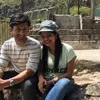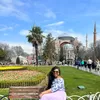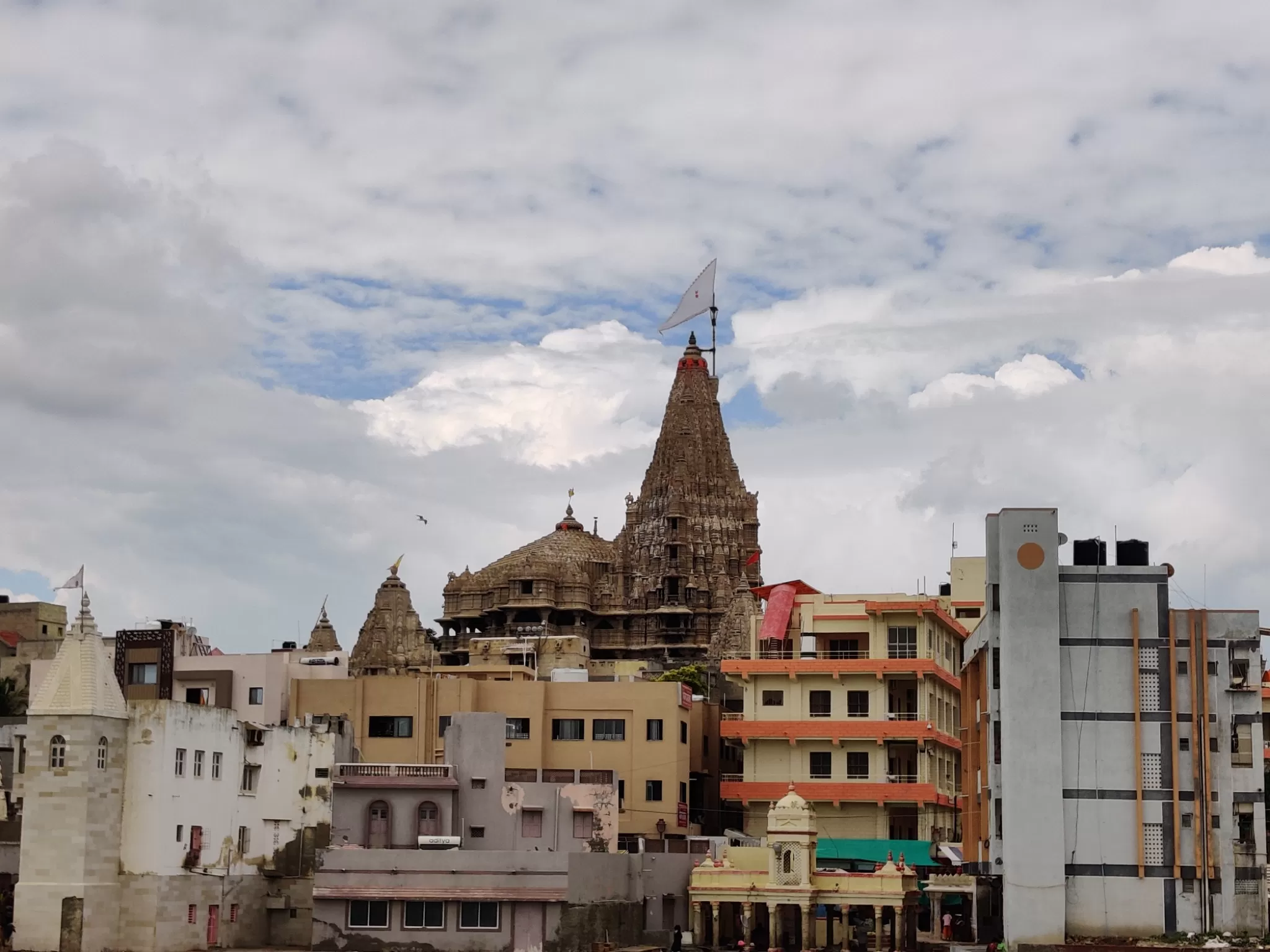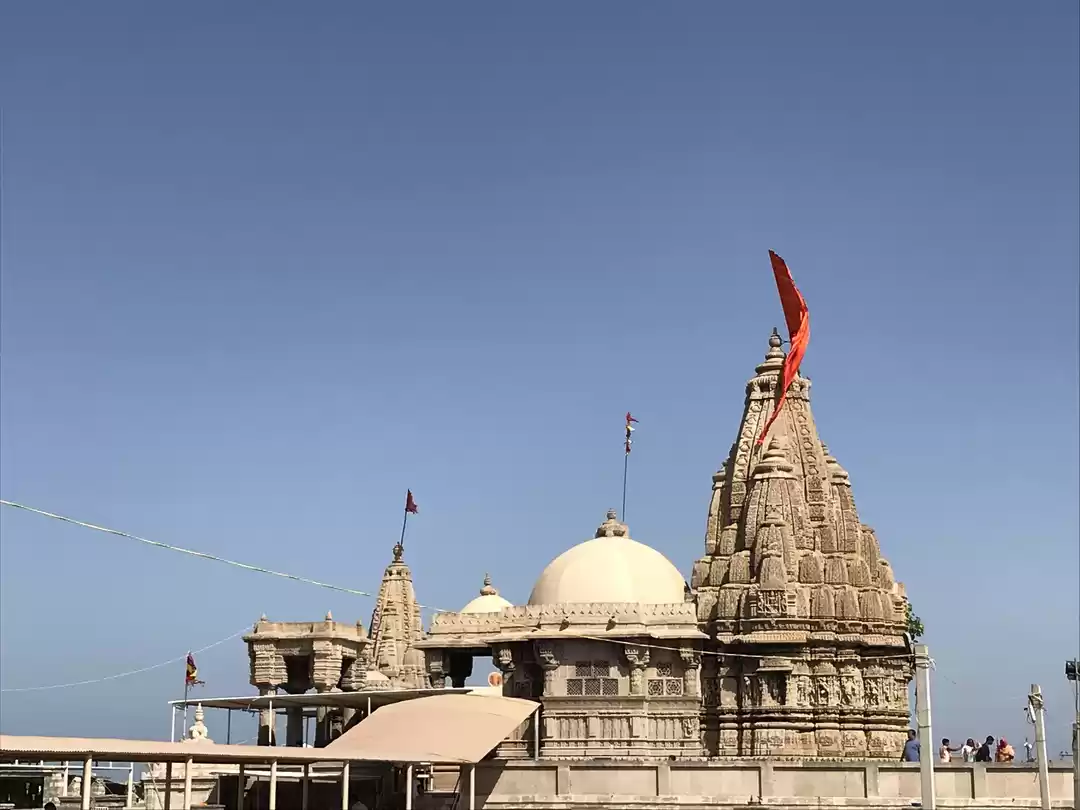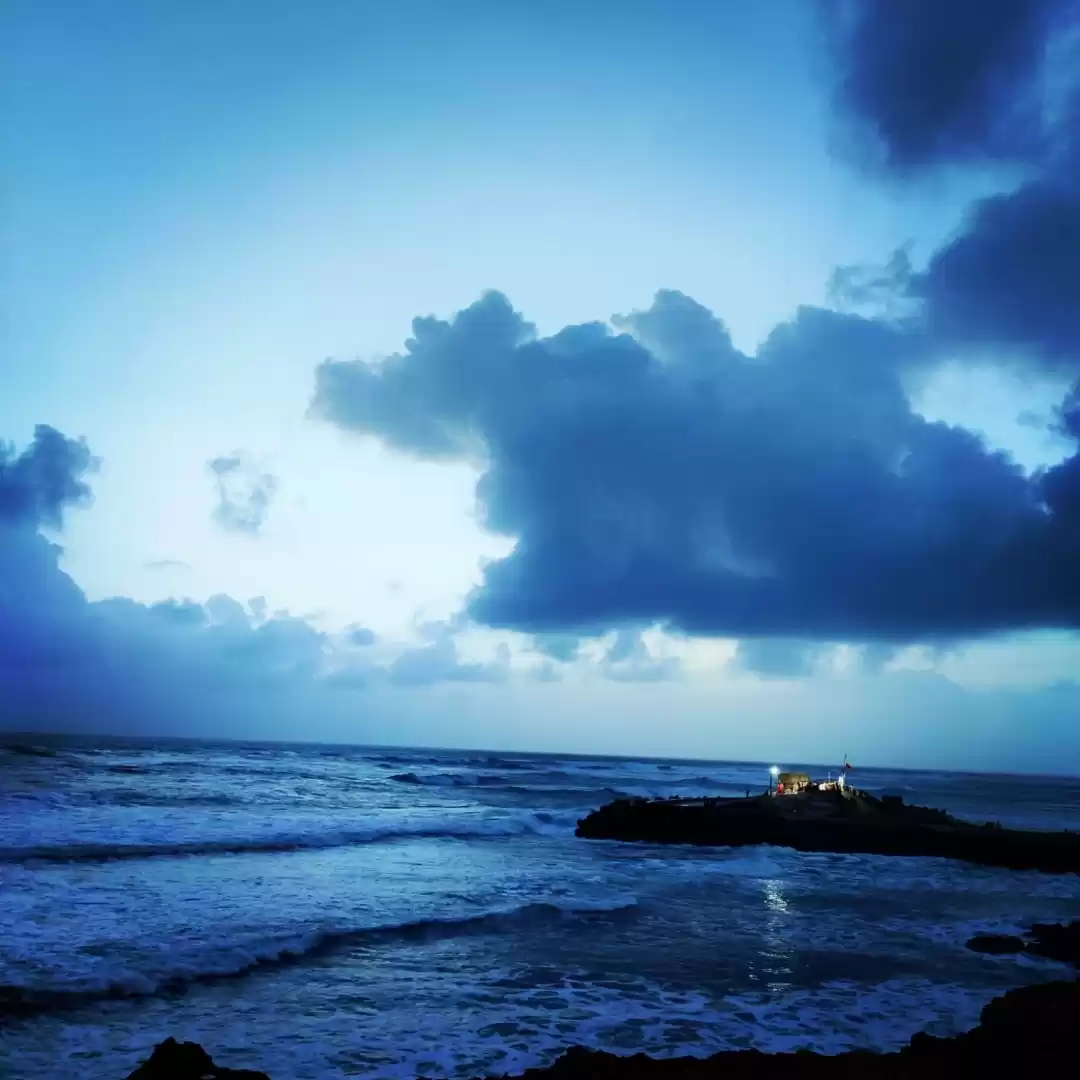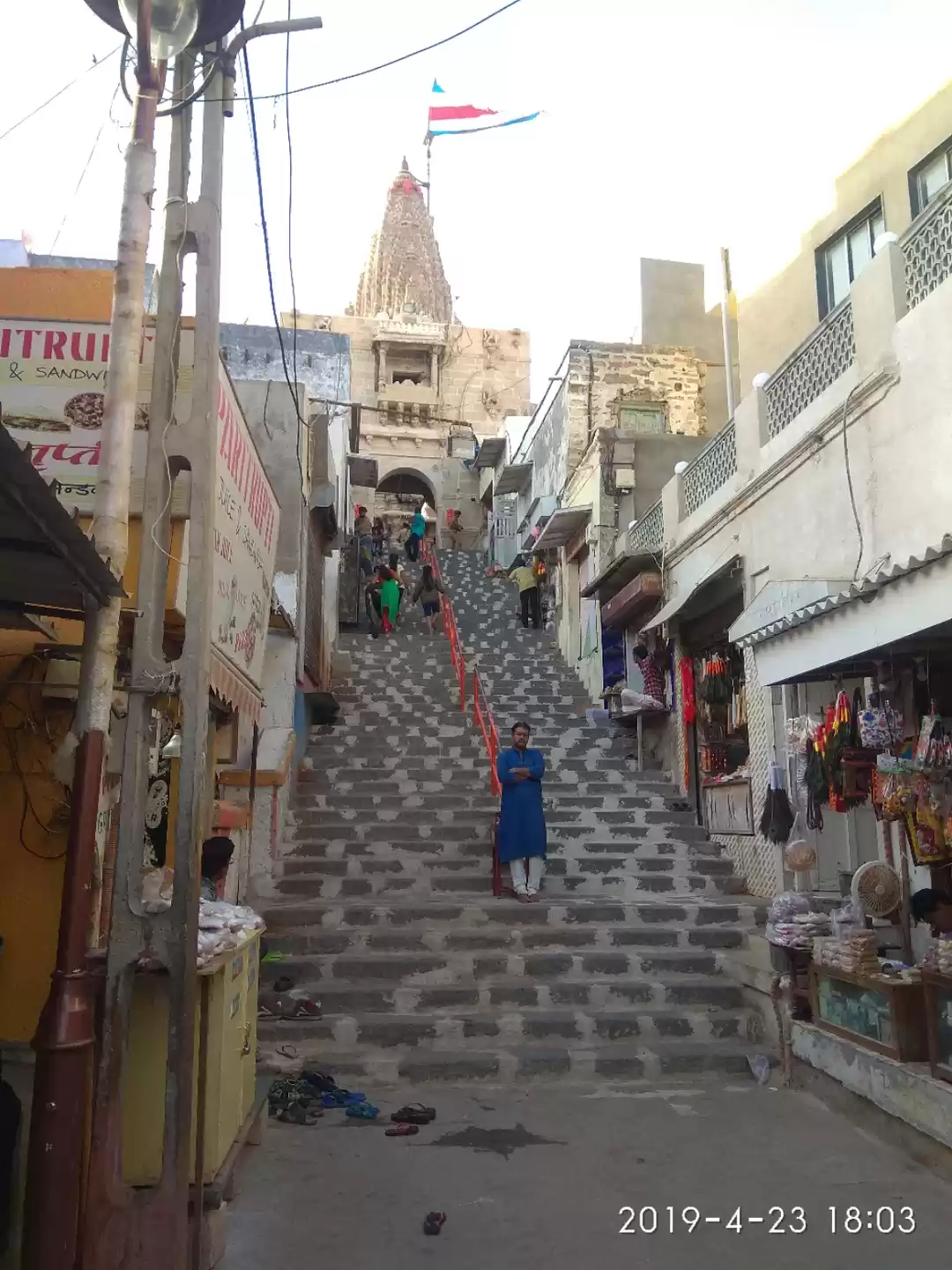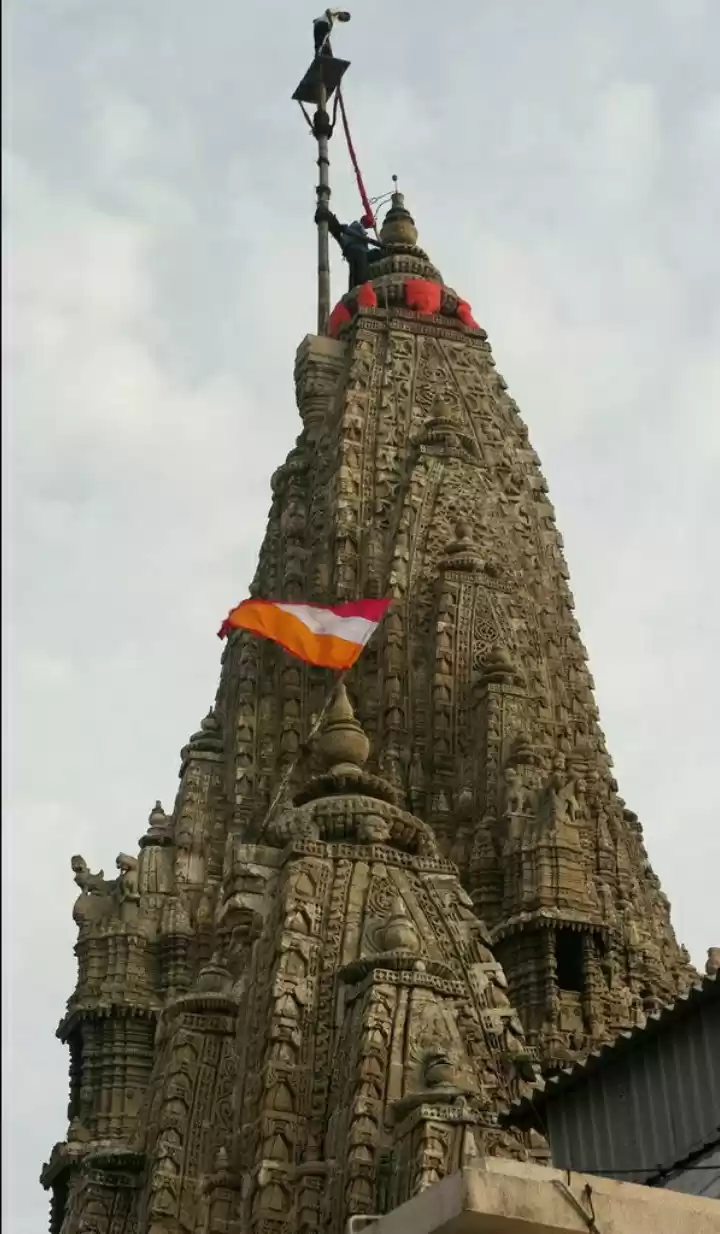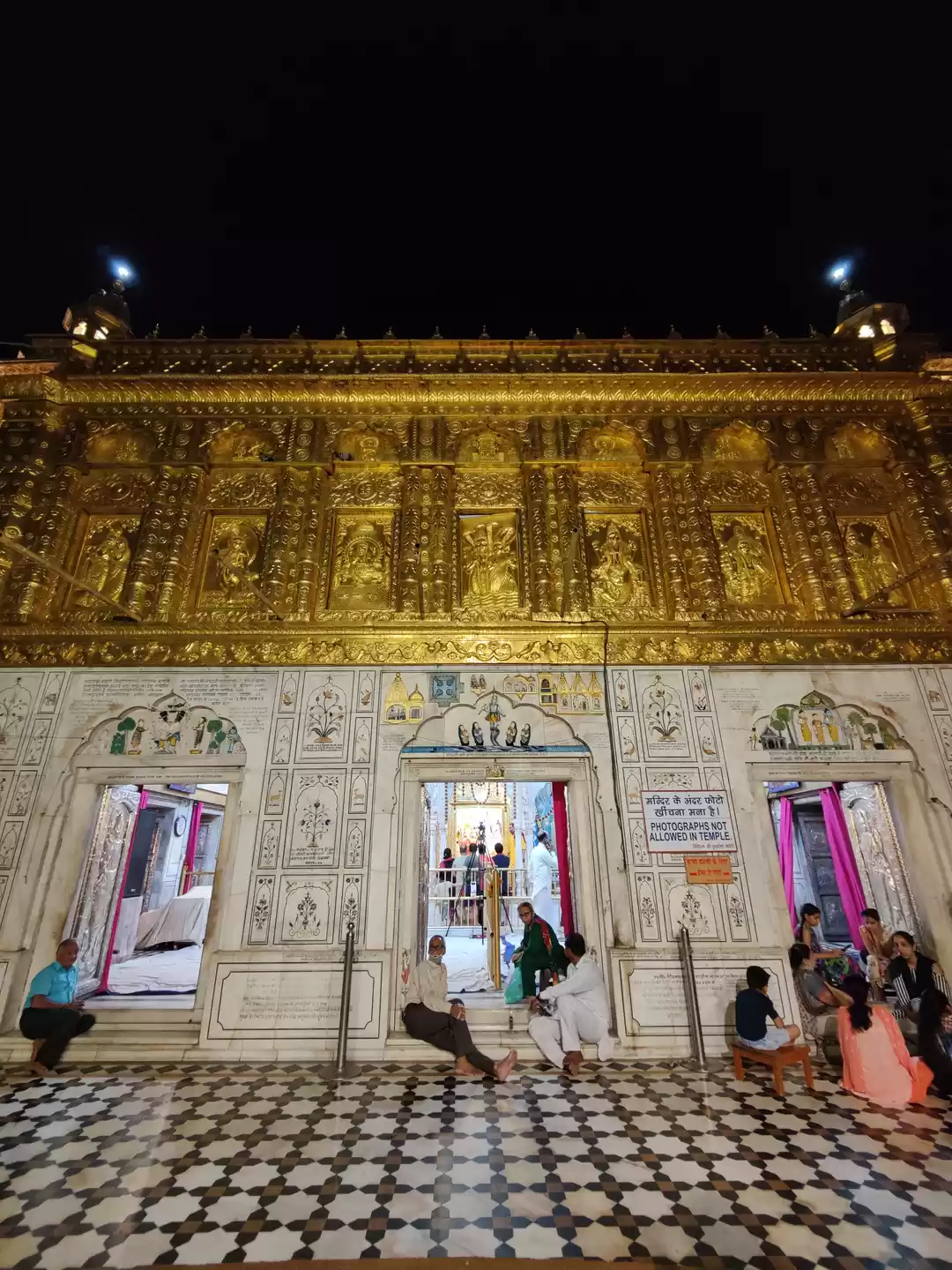Dwarkadeesh Temple is not just a place of worship, but also a place of wonder and awe. It boasts of a magnificent architecture, a rich history, a vibrant culture, and a serene atmosphere. It attracts millions of pilgrims and tourists every year, who come to seek the blessings of Lord Krishna and experience his divine presence.
In this article, we will tell you everything you need to know about Dwarkadeesh Temple, its history, architecture, features, and nearby attractions. We will also give you some tips and recommendations on how to reach and visit this temple and make the most of your trip. Whether you are a devotee, a history buff, or an adventure seeker, Dwarkadeesh Temple has something for everyone.
History and Legends of Dwarkadeesh Temple

Dwarkadeesh Temple has a long and fascinating history that is intertwined with mythology and legend. According to the Hindu scriptures, Dwarka was the capital city of Lord Krishna’s kingdom after he left Mathura to escape the wrath of his uncle Kansa. He built a splendid city on the banks of the Gomti river, which was surrounded by 12 gates and protected by a moat. He also built a majestic temple for himself, where he resided as Dwarkadeesh (the king of Dwarka).
The temple witnessed many events and miracles during Lord Krishna’s life. It was here that he married Rukmini Devi, his chief consort, after eloping with her from her wedding ceremony. It was here that he welcomed his childhood friend Sudama, who came to ask for his help in poverty. It was here that he performed the Raas Leela (divine dance) with his gopis (cowherd girls). It was here that he departed from this world after being hit by an arrow in his foot.
After Lord Krishna’s death, Dwarka was submerged under the sea due to a curse by Durvasa Rishi, a sage who was offended by some of the Yadavas (Lord Krishna’s clan). The temple was also lost under the water for many centuries, until it was rediscovered by Adi Shankaracharya, a great philosopher and reformer, in the 8th century CE. He re-established the worship of Lord Krishna in the temple and made it one of the four Char Dham.
Since then, the temple has been renovated and rebuilt several times by various kings and dynasties, such as the Chalukyas, the Solankis, the Mughals, the Marathas, and the British. The temple has also been attacked and plundered by many invaders and rulers, such as Mahmud of Ghazni, Alauddin Khilji, Aurangzeb, etc. However, each time the temple was saved by divine intervention or by brave devotees. The idol of Lord Krishna was also miraculously rescued from destruction and taken to safe places.
Today, Dwarkadeesh Temple stands as a testimony to the faith and devotion of millions of Hindus who revere Lord Krishna as their supreme lord and savior. It is also a part of the Dwaraka Mahatmya (the glory of Dwarka), which describes the spiritual significance and benefits of visiting this temple.
Architecture and Features of Dwarkadeesh Temple
Dwarkadeesh Temple is an architectural marvel that showcases the skill and craftsmanship of ancient India. The temple has a five-storied structure that rises to a height of 78 meters (256 feet). It has two shikharas (spires), one on the east and one on the west. The east shikhara is called Nija Shikhara or Raja Shikhara (the king’s spire), which has a flag with the symbol of the sun and the moon. The west shikhara is called Moksha Shikhara or Dhwaja Shikhara (the flag’s spire), which has a flag with the symbol of a swastika.
Grand entrance: The temple has a grand entrance that is called Moksha Dwara (the door of salvation). It leads to a flight of 56 steps that descend to the Gomti river. The steps are called Swarga Dwara (the door of heaven), as it is believed that anyone who takes a dip in the river here attains heaven. The entrance also has a small shrine of Gomti Devi, the presiding deity of the river.
Main hall: The main hall of the temple is called Sabha Mandap (the assembly hall), which has a spacious and ornate interior. It has 60 pillars that are carved with intricate designs and sculptures of various deities, animals, and humans. It also has a silver throne for Lord Krishna, which was donated by the Gaekwad Maharaja of Baroda in 1842 CE.
Inner sanctum: The inner sanctum of the temple is called Nij Mandir or Garbha Griha (the womb chamber), which houses the main idol of Lord Krishna as Dwarkadeesh. The idol is made of black marble and is adorned with gold and silver ornaments, jewels, and flowers. It has four arms that hold a conch, a discus, a mace, and a lotus. It also wears a crown and a peacock feather on its head. The idol is believed to be swayambhu (self-manifested) and very powerful. It is said that the idol changes its expression according to the mood and time of the day.
Shrines and idols: The temple also has several other shrines and idols within its premises, such as Rukmini Devi (Lord Krishna’s consort), Balarama (Lord Krishna’s brother), Pradyumna (Lord Krishna’s son), Aniruddha (Lord Krishna’s grandson), Lakshmi Narayan (Lord Vishnu and attain salvation.d Goddess Lakshmi), etc. The temple also has a sacred pond called Gopi Talav, where Lord Krishna used to play with his gopis.
The temple is also known for its rituals and festivals that are performed and celebrated throughout the year. The most important ones are:
1. Daily Aartis: The temple conducts five aartis (worship services) every day, namely Mangala Aarti (early morning), Shringar Aarti (morning), Sandhya Aarti (evening), Shayan Aarti (night), and Bhog Aarti (afternoon). Each aarti involves offering prayers, songs, lamps, incense, flowers, food, etc. to Lord Krishna.
2. Janmashtami: This is the birth anniversary of Lord Krishna, which falls on the eighth day of the dark fortnight of the month of Bhadrapada (August-September). The temple celebrates this occasion with great pomp and fervor. The idol of Lord Krishna is decorated with new clothes and jewels and placed in a cradle. The devotees rock the cradle and offer sweets, fruits, milk, etc. to the lord. The temple also organizes cultural programs, such as bhajans (devotional songs), kirtans (musical chants), dances, dramas, etc. that depict the life and leelas (divine acts) of Lord Krishna. The celebration culminates with a grand midnight aarti, when Lord Krishna was born.
3. Rath Yatra: This is the chariot procession of Lord Krishna, which takes place on the second day of the bright fortnight of the month of Ashadha (June-July). The idol of Lord Krishna is taken out of the temple in a huge wooden chariot that is decorated with flowers, flags, umbrellas, etc. The chariot is pulled by thousands of devotees who chant “Jai Dwarkadeesh” (victory to Dwarkadeesh). The procession covers a distance of about 4 km around the city, passing through various streets and markets.
How to Reach and Visit Dwarkadeesh Temple
Dwarkadeesh Temple is located in Dwarka city, which is situated on the western coast of Gujarat state in India. It is well connected by road, rail, and air to other parts of India.
By Air: The nearest airport to Dwarka is Jamnagar Airport, which is about 137 km away. It has regular flights from major cities like Mumbai, Delhi, Ahmedabad, etc. From Jamnagar Airport, you can take a taxi or a bus to reach Dwarka.
By Rail: The nearest railway station to Dwarka is Dwarka Railway Station, which is about 2 km away from the temple. It has regular trains from major cities like Mumbai, Delhi, Ahmedabad, etc. From Dwarka Railway Station, you can take a rickshaw or a taxi to reach the temple.
By Road: Dwarka is well connected by road to other cities and towns in Gujarat and neighboring states. You can take a bus or a car to reach Dwarka from various places. The state highway 947 connects Dwarka to Jamnagar, Rajkot, Porbandar, etc. The national highway 27 connects Dwarka to Ahmedabad, Vadodara, Surat, etc.
Timings
The temple is open for visitors from 6:30 am to 9:30 pm every day. However, the temple remains closed for darshan (viewing) during certain hours when the rituals are performed.
The timings for darshan are as follows:
Morning: 6:30 am to 10:30 am
Afternoon: 11:00 am to 12:00 pm
Evening: 5:00 pm to 9:30 pm
The entry fee for the temple is free for everyone. However, you may have to pay a nominal amount for special services or offerings, such as VIP darshan, prasad (sacred food), abhishek (ritual bathing), etc.
Nearby Attractions and Places to Visit in Dwarka

Dwarkadeesh Temple is not the only attraction in Dwarka. There are many other places that you can visit in and around Dwarka that will make your trip more memorable and enjoyable. Some of them are:
Bet Dwarka: This is an island that is located about 30 km away from Dwarka city. It is believed that this was the actual residence of Lord Krishna where he lived with his family and friends. It is also known as Shankhodhar Island, as it is shaped like a conch shell. You can reach Bet Dwarka by taking a ferry boat from Okha port. Bet Dwarka has many temples dedicated to Lord Krishna, his consort Rukmini Devi, his brother Balarama, his son Pradyumna, etc. It also has a white sand beach where you can relax and enjoy the scenic beauty of the Arabian Sea.
Nageshwar Jyotirlinga: This is one of the 12 Jyotirlingas (self-manifested lingas) of Lord Shiva that are considered very auspicious and powerful by Hindus. It is located about 17 km away from Dwarka city. It is said that Lord Shiva appeared here as a giant snake (Nageshwar) and killed a demon named Daruka who was tormenting his devotees. The temple has a huge statue of Lord Shiva outside and a silver linga inside. The temple also hosts a fair during Shivaratri (the night of Lord Shiva) when thousands of devotees flock to the temple to worship and offer prayers.
Gomti Ghat: This is a sacred river bank that is located near the Dwarkadeesh Temple. It is believed that the Gomti river is a tributary of the Ganges river, which is the holiest river in India. It is also said that Lord Krishna purified the Gomti river by washing his feet in it. The ghat has many ghats (steps) and temples along its banks, such as the Samudra Narayan Temple, the Gomatiji Temple, the Panchanada Tirtha, etc. The ghat is also a place where many rituals and ceremonies are performed, such as taking a holy dip, offering water to the sun god, performing the last rites of the deceased, etc.
Rukmini Devi Temple: This is a temple dedicated to Rukmini Devi, the chief consort of Lord Krishna. It is located about 2 km away from Dwarka city. It is said that this temple was built by Lord Krishna himself to please his beloved wife, who was cursed by Durvasa Rishi to live separately from him. The temple has a beautiful architecture and design, with intricate carvings and paintings. The idol of Rukmini Devi is made of black marble and is decorated with gold and silver ornaments.
There are many more places that you can explore in Dwarka, such as the Dwarka Lighthouse, the Sudama Setu (bridge), the Gopi Talav (pond), etc.
Dwarkadeesh Temple is a divine experience in the land of Lord Krishna that will fill your heart and soul with peace and joy. It is a place where you can witness the glory and grace of Lord Krishna, who is the supreme personality of Godhead. It is also a place where you can learn about the history and culture of Dwarka, which is one of the oldest and most sacred cities in India.
If you are looking for a spiritual and cultural getaway, then Dwarkadeesh Temple is the perfect destination for you.

